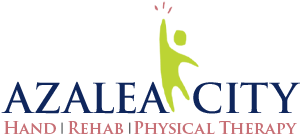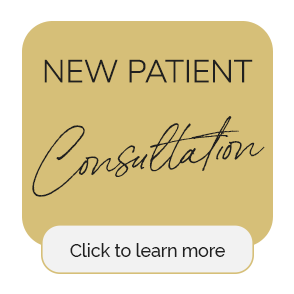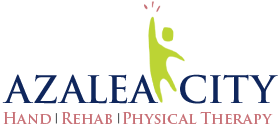Upper Back Pain in Mobile AL

Upper back pain in Mobile AL can creep into your life unexpectedly, making even the simplest movements feel uncomfortable or unbearable. Whether it's caused by poor posture, stress, or the strain of everyday activities, upper back pain can disrupt your routine, leaving you stiff, sore, and searching for relief. The good news? Physical therapy/occupational therapy offers a natural, effective solution to help you tackle upper back pain at its source-without the need for medications or surgery. Let's explore how physical therapy/occupational therapy at Azalea City Hand and Rehab and Physical Therapy can help you manage and overcome upper back pain, empowering you to get back to a life of comfort and mobility.
What Causes Upper Back Pain in Mobile AL?
Unlike the lower back, which tends to be more vulnerable to injury due to its mobility, the upper back (also known as the thoracic spine) is built for stability. However, that doesn't mean it's immune to pain. Upper back pain can be caused by a variety of factors, many of which are related to lifestyle habits, posture, or stress. Here are some of the most common culprits behind upper back pain:
- Poor Posture: One of the most frequent causes of upper back pain is poor posture, especially if you spend hours sitting at a desk or hunched over a screen. Slouching, rounded shoulders, and forward head posture can all contribute to upper back strain, leading to discomfort and pain.
- Muscle Tension and Stress: When we're stressed, we tend to hold tension in our upper back and shoulders. Over time, this tension can lead to tightness, stiffness, and even chronic pain.
- Overuse or Strain: Repetitive movements, heavy lifting, or sports activities that involve pulling or pushing can strain the muscles and ligaments in your upper back, resulting in pain and discomfort.
- Muscle Imbalances: Weak or tight muscles in your upper back and shoulders can create imbalances that contribute to upper back pain. For example, if your chest muscles are tight, they can pull your shoulders forward, leading to upper back strain.
- Spinal Conditions: Conditions like scoliosis, arthritis, or a herniated disc in the thoracic spine can also contribute to upper back pain, especially if they go untreated.
While upper back pain can be caused by a variety of factors, the key to relief lies in addressing the root cause of the pain-and that's where physical therapy/occupational therapy can make all the difference.
How Mobile AL Physical Therapy/Occupational Therapy Can Relieve Upper Back Pain
Physical therapy/occupational therapy targets the root causes of upper back pain, not just relieving discomfort but also preventing it from returning. Whether your pain results from poor posture, muscle imbalances, or stress, physical therapy/occupational therapy takes a personalized and comprehensive approach to help you recover. Here's how it works:
Thorough Evaluation and A Treatment Plan Made For You
Before starting any treatment, the first step is identifying the exact cause of your upper back pain. During your initial appointment, your physical therapist will conduct a detailed assessment, evaluating your posture, range of motion, muscle strength, and everyday habits. We will also review your medical history and identify any repetitive activities that may be contributing to your pain.
With this information, your therapist will develop a personalized treatment plan tailored to your specific condition. The plan will focus on alleviating your pain, improving mobility, and addressing the underlying cause-whether it's related to poor posture, muscle tension, or overuse.
Posture Improvement and Ergonomics
A major contributor to upper back pain is poor posture, especially for those who spend long periods sitting or standing in ways that strain the muscles in the upper back. Physical therapy/occupational therapy aims to correct this by helping you maintain proper alignment throughout your day.
- Posture Training: Your therapist will show you how to sit, stand, and move in ways that support your upper back and reduce muscle strain. This includes tips on how to sit ergonomically at your desk, how to adjust your chair or monitor, and how to maintain good posture while driving or standing for extended periods.
- Ergonomic Adjustments: In addition to posture correction, we'll recommend adjustments to your workspace or home setup that better support your body. Simple changes, such as adjusting the height of your desk or choosing a supportive chair, can significantly reduce upper back pain.
By focusing on posture and ergonomics, physical therapy/occupational therapy helps to reduce unnecessary strain on the upper back, providing immediate relief and long-term benefits.
Strengthening and Stretching Programs
Imbalances in muscle strength or tightness in the upper back, shoulders, or chest can exacerbate pain. Physical therapy/occupational therapy incorporates specific exercises designed to strengthen and stretch these muscles, promoting a more balanced and pain-free upper body.
- Strengthening Exercises: Your therapist will guide you through exercises to build strength in the muscles that support your upper back and shoulders. Strengthening these muscles reduces pressure on the spine and encourages better posture, making it easier to maintain alignment throughout your day.
- Stretching Techniques: Tight muscles in the chest, shoulders, and upper back can restrict movement and contribute to pain. Stretching exercises loosen these muscles, improving flexibility and reducing tension, helping you move with greater ease.
These exercises not only relieve your current pain but also prevent future issues by promoting better muscle balance and flexibility.
Hands-On Therapy for Immediate Relief
Along with exercise, physical therapists frequently use manual therapy techniques to deliver hands-on relief from upper back pain. Manual therapy helps relax the muscles, reduce stiffness, and improve mobility.
- Soft Tissue Mobilization: This technique targets tight muscles and improves blood flow to promote healing and reduce discomfort.
- Joint Mobilization: Gentle manipulation of the joints in the upper back and shoulders helps alleviate stiffness, restore mobility, and ease pain.
- Myofascial Release: Applying pressure to the fascia, the connective tissue surrounding your muscles, releases tension and improves flexibility.
Manual therapy offers immediate relief from pain and stiffness, allowing you to move more freely and comfortably.
Managing Stress and Relaxation Techniques
Stress can play a significant role in upper back pain, often leading to increased muscle tightness and tension. Physical therapy/occupational therapy also focuses on stress management to prevent tension from contributing to chronic pain.
- Breathing Techniques: We'll teach you breathing exercises that calm your nervous system and help release tension in the upper back and shoulders.
- Relaxation Methods: Therapists may also use relaxation techniques, such as progressive muscle relaxation or guided imagery, to help your body release built-up tension and promote relaxation.
By addressing the physical effects of stress, physical therapy/occupational therapy helps manage upper back pain more effectively and prevent future flare-ups.
10 Common Myths About Upper Back Pain And Physical Therapy/Occupational Therapy
1. Myth: Upper back pain will go away on its own.
Reality: While minor upper back pain may improve over time, ignoring it can lead to chronic discomfort and long-term issues. Addressing the root cause with physical therapy/occupational therapy can prevent it from worsening.
2. Myth: Rest is the best solution for upper back pain.
Reality: Although rest can help in the early stages, prolonged inactivity often weakens muscles, leading to more pain. Physical therapy/occupational therapy encourages gentle movement and exercises to promote healing and restore mobility.
3. Myth: Poor posture is the only cause of upper back pain.
Reality: While poor posture is a common contributor, upper back pain can also be caused by stress, muscle imbalances, overuse, or even underlying conditions like arthritis or scoliosis. Physical therapy/occupational therapy can address all these factors.
4. Myth: Physical therapy/occupational therapy is only for severe injuries.
Reality: Physical therapy/occupational therapy is beneficial for both acute and mild upper back pain. Early intervention can prevent more serious problems down the road, and even mild pain can respond well to therapy.
5. Myth: Physical therapy/occupational therapy is just about exercises.
Reality: Physical therapy/occupational therapy encompasses a range of treatments, including manual therapy, posture correction, ergonomic advice, and stress management, not just exercises. It's a holistic approach to relieving pain.
6. Myth: You need a referral to see a physical therapist.
Reality: In many places, you can go directly to a physical therapist without a referral. This means quicker access to treatment and faster relief from upper back pain.
7. Myth: Painkillers are more effective than physical therapy/occupational therapy.
Reality: Painkillers may temporarily mask the pain, but they don't address the underlying causes. Physical therapy/occupational therapy treats the root of the problem and provides long-term solutions without the side effects of medications.
8. Myth: Physical therapy/occupational therapy is painful.
Reality: While some treatments may cause temporary discomfort, physical therapy/occupational therapy is designed to be manageable and should help reduce pain in the long run. Your therapist will adjust the intensity based on your comfort level.
9. Myth: Upper back pain is only caused by physical strain.
Reality: Emotional stress and anxiety can manifest as physical tension in the upper back and shoulders. Physical therapy/occupational therapy can help with stress management techniques and relaxation exercises to ease this type of pain.
10. Myth: Once your upper back pain is gone, you don't need physical therapy/occupational therapy anymore.
Reality: Even after your pain subsides, continuing with your therapist's recommended exercises and posture corrections is important to prevent future pain and keep your back healthy.
You Don't Have To Live In Pain
If you're tired of dealing with upper back pain and want to find a natural, long-lasting solution, physical therapy/occupational therapy may be the answer. With a personalized treatment plan that addresses the root causes of your discomfort, physical therapy/occupational therapy can help you relieve pain, regain mobility, and prevent future issues. Don't wait-schedule an appointment with a physical therapist at Azalea City Hand and Rehab and Physical Therapy today and take the first step toward a pain-free life.
OFFICE HOURS
Monday
8:00am - 5:00pm
Tuesday
8:00am - 5:00pm
Wednesday
8:00am - 5:00pm
Thursday
8:00am - 5:00pm
Friday
8:00am - 12:00pm
Saturday & Sunday
Closed
Azalea City Hand and Rehab and Physical Therapy
316 S Sage Ave Ste C
Mobile, AL 36606


